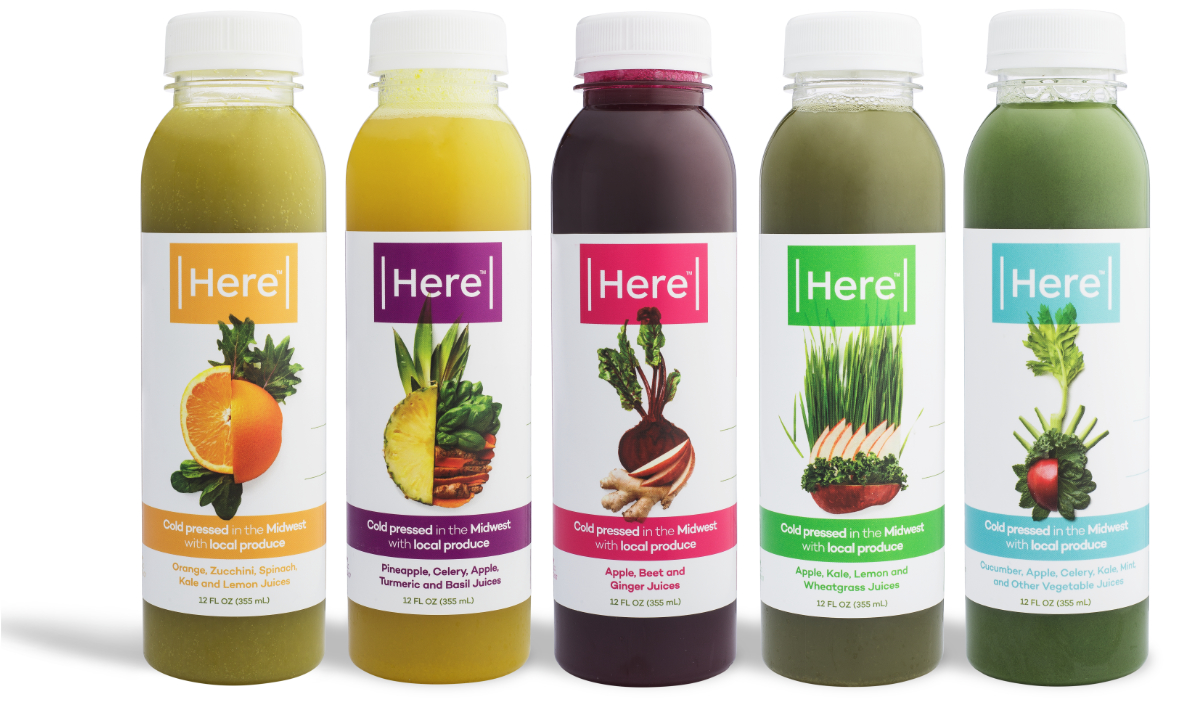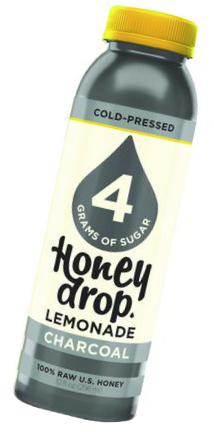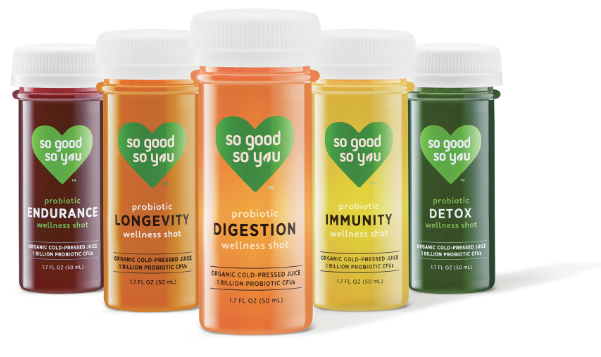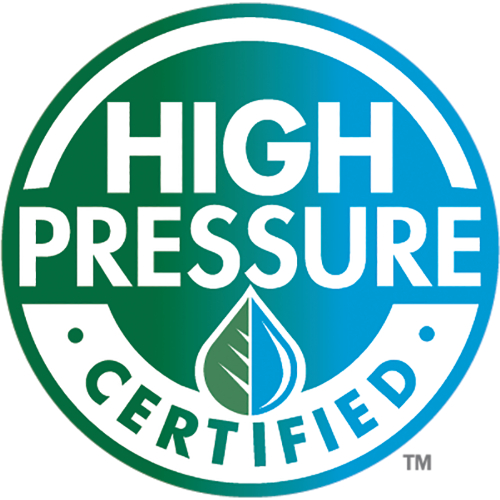CHICAGO — The perishable ready-to-drink (R-.T-.D.) beverages retailers stock in the many refrigerated cases found throughout the supermarket continue to grow in variety thanks to advanced clean label technologies to preserve flavor and nutrition while also extending shelf life. Technologies such as high-pressure processing (H.P.P.), also known as cold pressure, make it possible to offer premium “fresh” beverages for complex distribution networks.
The H.P.P. system involves the loading of airtight/hermetically sealed packages into carrier baskets. The baskets are inserted into the H.P.P. vessel, which then is sealed by plugs. Potable water is pumped into the vessel creating isostatic pressure (equal pressure on all sides) on the packages. Product is held at a high pressure for about six minutes, with pressures and times varying by product. This pressure disrupts the microbial biochemistry of pathogens and spoilage bacteria, which helps preserve freshness and increase shelf life.
Pressurizing sealed containers is the basis of H.P.P. The leading benefits of the process include destruction of pathogens, pasteurizing product within the packaging, extending shelf life, developing cleaner label products and reducing food waste.
“The pressure is transmitted uniformly throughout the packaged food, regardless if the beverage is only juice, or if the juice is mixed with pulp, seeds, plant protein or other edible solids,” said Vinicio Serment, applications scientist, Hiperbaric U.S.A. Corp., Doral, Fla. “The pressure levels used for commercial conditions do not alter the carbon-carbon bonds that are the backbone of chemical compounds associated with the nutritional profile and sensorial characteristics of raw foods. The pressure is als o applied at room temperature, allowing nearly 100% retention of these compounds, most of which are very heat sensitive.”
o applied at room temperature, allowing nearly 100% retention of these compounds, most of which are very heat sensitive.”
Cold-pressed juice manufacturers typically employ H.P.P. to ensure food safety. The cold-press process relies on a slow pulverizer with hydraulic press to extract juice, as compared to more traditional centrifugal juicing processes. It does not include a food safety or preservation step. To achieve about a 30-day refrigerated shelf life, cold-pressed juices typically undergo the additional step of H.P.P. to kill potentially harmful microorganisms.
“Beverage manufacturers view H.P.P. as another science-based tool available in their food safety program,” said Mark Duffy, chief executive officer of Universal Pure Company L.L.C., Villa Rica, Ga.
The Food and Drug Administration recognizes H.P.P. as an acceptable method to achieve the 5-log pathogen reduction identified in a juice Hazard Analysis and Critical Control Points program. The process may be done in-house or sent out to the growing network of H.P.P. outsourcers.
A clean label process
 “Consumers continue to scrutinize the foods and beverages they consume and are increasingly avoiding preservatives and added ingredients, such as flavoring and colors,” said David Luk, founder and c.e.o. of Honeydrop Beverages, Brooklyn, N.Y., which manufactures a line of premium cold-pressed lemonades with functional ingredients such as charcoal, lavender and turmeric. “Being a non-thermal treatment, H.P.P. allows brands to produce products without preservatives and have the cleanest ingredient statements that highlight items such as fresh produce and vegetables.”
“Consumers continue to scrutinize the foods and beverages they consume and are increasingly avoiding preservatives and added ingredients, such as flavoring and colors,” said David Luk, founder and c.e.o. of Honeydrop Beverages, Brooklyn, N.Y., which manufactures a line of premium cold-pressed lemonades with functional ingredients such as charcoal, lavender and turmeric. “Being a non-thermal treatment, H.P.P. allows brands to produce products without preservatives and have the cleanest ingredient statements that highlight items such as fresh produce and vegetables.”
The H.P.P. technology has been a great fit for Zupa Noma, Sonoma, Calif., said Jon Sebastiani, c.e.o.
“It allows us to achieve and maintain the nutritional integrity that is so important to us and our brand, while also giving us the food safety security and shelf life similar to that of a pasteurized product,” he said.
Cold-pressed juice trailblazer Evolution Fresh, a business of Starbucks Corp., Seattle, continues to break boundaries with its new line for 2018. The company has rolled out seven organic smoothies that combine cold-pressed fruit and vegetable juices with probiotics, coconut milk and other functional ingredients.
“We know a growing number of people are looking for more from their juice,” said Ryan Ziegelmann, president of Evolution Fresh. “With our expansion into functional beverages, we are putting 24 years of experience to work to authentically expand what cold-pressed, high-pressure processed juice can deliver.”
 The new products rolled out in packaging to reflect the brand’s new look, which is meant to communicate Evolution Fresh’s expanded focus into functional beverages. Ingredients are now listed on the front of the bottle, so customers may read the functional ingredients inside.
The new products rolled out in packaging to reflect the brand’s new look, which is meant to communicate Evolution Fresh’s expanded focus into functional beverages. Ingredients are now listed on the front of the bottle, so customers may read the functional ingredients inside.
Probiotics survive the H.P.P. treatment, provided the proper parameters — namely pressure and hold time — are selected.
“H.P.P. is considered a ‘log reduction’ technology, which means the higher the pressure and longer the hold time, the greater the reduction of pathogens,” Mr. Duffy said. “By understanding the bacteria load, H.P.P. processers can dial-in the best H.P.P. parameters to achieve their food safety goals without significantly impacting the high numbers of probiotics in the product.”
So Good So You, Minneapolis, is entering this space with the launch of new refrigerated, certified organic, non-G.M.O. vegan wellness shots that support digestion and immune health. The 1.7-oz shots come in five flavors and serve up one billion vegan probiotic colony forming units.
“In the beverage space today, H.P.P. is playing a role in the preservation of premium juices, drinkable meals, plant-based protein drinks, cocktail mixers, nutrient dense shots, R.-T.-D. coffee and tea, and bone broths,” Mr. Duffy said. “Adoption of H.P.P. in other beverage market segments will occur as new product opportunities are researched and developed.”
 H.P.P. beverages are perishable; however, the non-thermal process allows for an extended refrigerated shelf life until opened. This is because H.P.P. inactivates vegetative pathogens, as well as spoilage organisms. It is only minimally effective on enzymes, and not effective on bacteria spores.
H.P.P. beverages are perishable; however, the non-thermal process allows for an extended refrigerated shelf life until opened. This is because H.P.P. inactivates vegetative pathogens, as well as spoilage organisms. It is only minimally effective on enzymes, and not effective on bacteria spores.
Shelf life varies on beverage formulation, pH, water activity and processing parameters selected. In general, higher-acid products require lower pressure and hold times to achieve desired extended shelf life.
Key considerations for innovation
Beverage formulations require little or no adjustments when switching from thermal processing to H.P.P. The technology does not impact the performance of acidulants, proteins or sweeteners.
“Depending on the type of stabilizer, however, there can be some viscosity changes that can be easily tweaked in the formulation,” said Errol Raghubeer, senior vice-president of research and development, Avure Technologies L.L.C., Middletown, Ohio. “It is also important to adjust the pH of fruit, vegetable and coconut water juice beverages to pH ≤4.6 as defined in F.D.A.’s juice HACCP 5-log pathogen reduction rule. In addition to pH, the Brix level is important when selecting H.P.P. treatment conditions, as higher Brix will affect product water activity.
Third-party H.P.P. verification seal
The Cold Pressure Council was formed in early 2017 to address questions about high-pressure processing technology while developing and formalizing industry best practices. Food and beverage manufacturers using H.P.P. technology are not required to label or declare use on packaging or elsewhere. However, it’s the council’s belief that it makes sense to communicate use to consumers so they better understand why certain products have a long shelf life without the inclusion of preservatives.“The program is designed to standardize use of H.P.P. equipment for food safety,” said Joyce Longfield, vice-chair of the council and vice-president of product innovation at Good Foods Group L.L.C., Pleasant Prairie, Wis., one of the council’s founding members. “The web site is designed to educate the consumer about the benefits of foods and beverages treated by H.P.P. equipment. The discussion is not just on food safety. It includes the many other benefits, namely the elimination of preservatives and retention of nutrients.”
“H.P.P. can work with carbonated beverages, but does require slight over carbonation prior to H.P.P. to compensate for what is lost during the process.
“The H.P.P. process extends shelf life immensely. For example, fresh-squeezed orange juice spoils in less than a week, while H.P.P. orange juice has a microbiological shelf life of more than one year; however, the typical shelf life given to H.P.P. orange juice and other high-acid juices is 90 to 120 days due to limitations of packaging, enzymatic reactions and other marketing considerations.”
Temperature abuse may affect the microbiological shelf life due to the growth of certain groups of lactic acid bacteria.
“Any packaging to be considered for H.P.P. must be hermetically sealed,” Mr. Duffy said. “To achieve the maximum shelf life, packaging with barrier properties is often selected.”
This includes using films with low oxygen transmission rates and low moisture vapor transmission rates. The films are used to form all shapes and sizes of plastic bottles and cups, as well as pouches, with or without spouts.
“A key characteristic of the packaging is that at least one surface must be able to accommodate the temporary volume change that occurs during the H.P.P. cycle,” Mr. Duffy said. “At H.P.P. pressures, liquids are compressible. During the H.P.P. cycle, any headspace within the package is compressed and then the product is compressed up to 15% depending on the H.P.P. recipe. As the isostatic pressure is released, the product and headspace return to pre-H.P.P. volumes.”
Glass is not flexible enough to withstand high pressure. Metal, on the other hand, may not recover its shape after H.P.P.
“Paper packaging is not recommended,” said Guy Ironi, c.e.o. of Nutrifresh Services, Edison, N.J. “This is because the product is submerged in water during the process.”
Mr. Raghubeer said, “Bottle closures are critical in preventing leakage of water and product into and out of the container during pressure and decompression. Cap manufacturers have designed closures to prevent this from happening, as leakage compromises the microbiological integrity of the product as well as promotes certain enzyme reactions.”
 In response to the demand for H.P.P. in the beverage sector, Hiperbaric will be launching prototype equipment by the end of 2018 that will allow processors to package H.P.P. beverages in glass, metal, carton bricks and other types of packaging materials currently inappropriate for conventional H.P.P.
In response to the demand for H.P.P. in the beverage sector, Hiperbaric will be launching prototype equipment by the end of 2018 that will allow processors to package H.P.P. beverages in glass, metal, carton bricks and other types of packaging materials currently inappropriate for conventional H.P.P.
With the new process, the beverage is directly pumped into a bag placed inside the high-pressure vessel. The vessel is filled with water and pressure is applied.
“After high-pressure levels are reached, the pressure is held between 1 to 10 minutes to eliminate foodborne pathogens,” Mr. Serment said. “The vessel is depressurized as usual. Then the bag is connected to an aseptic filling line, allowing processors to use any type of packaging.”
The lack of glass packaging is what’s preventing beer and wine processors from using H.P.P. technology, Mr. Serment said. Research shows that most physicochemical properties of beer and wine, such as alcohol content and pH, remain unaltered.
“Furthermore, sulfites may not be required to be included to control microbial growth, and H.P.P. may also be used to halt fermentation,” Mr. Serment said.
Regardless of the product, H.P.P. does not need to be declared on beverage labels, as it is considered non-thermal and does not add ingredients to the label. Companies are responsible for product testing to substantiate shelf life claims.





